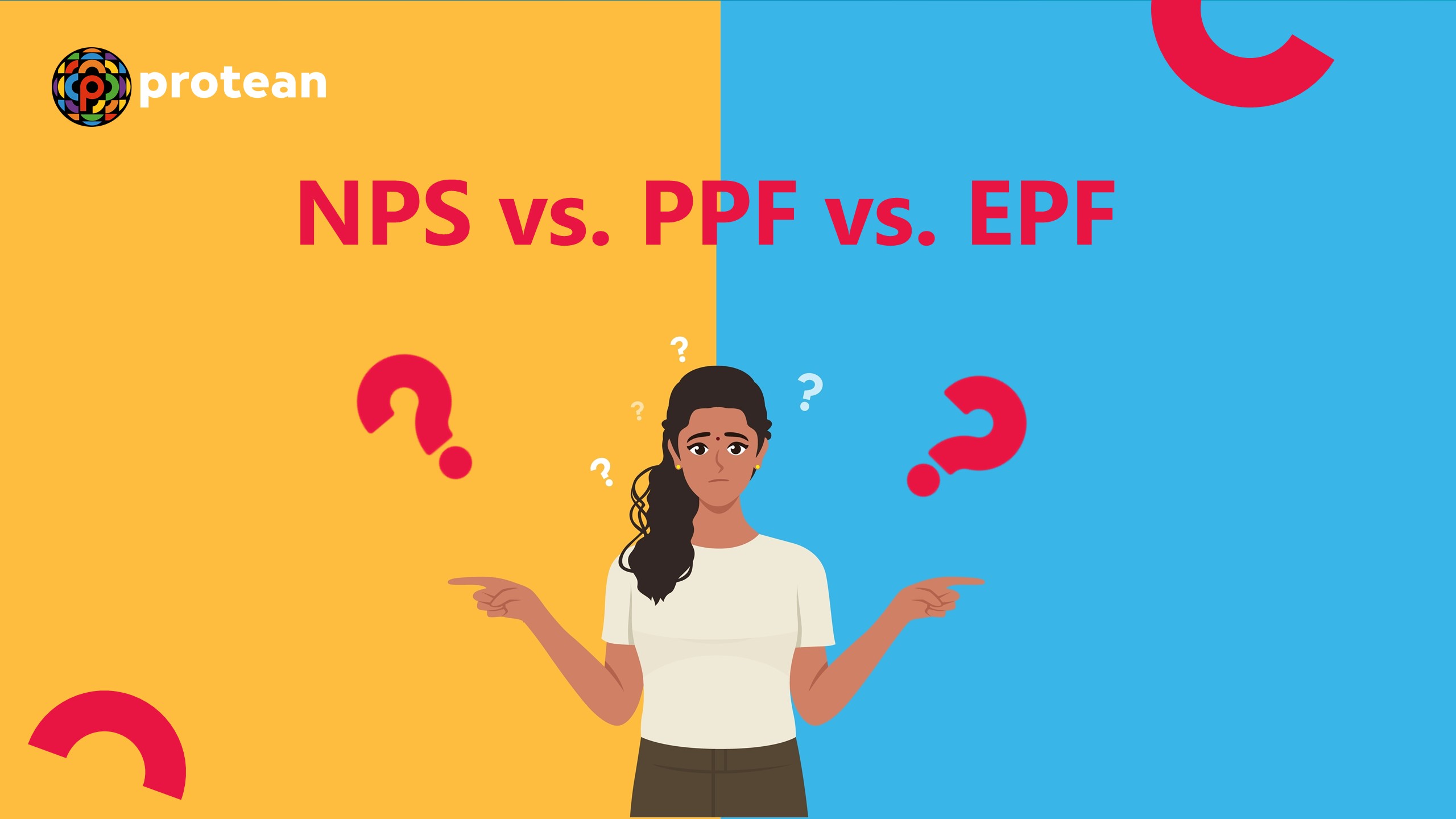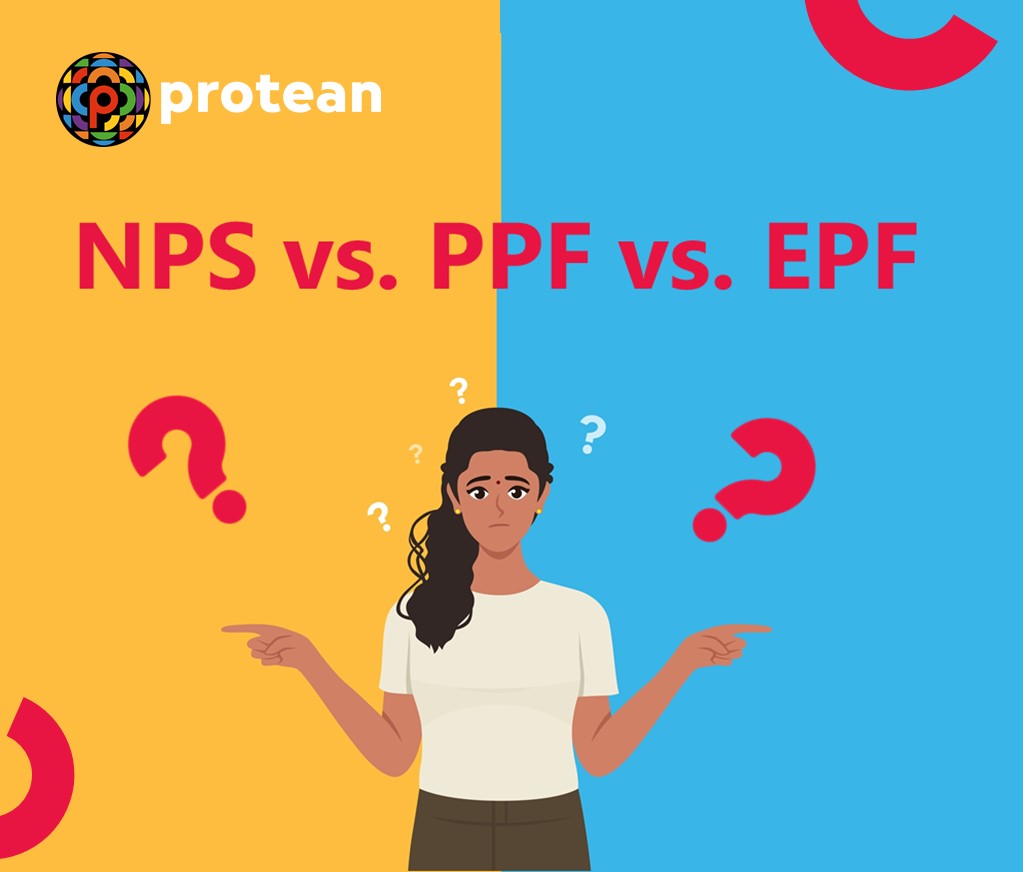Planning for retirement holds significant importance in everyone's life. In India, you will find several investment products designed to help you save for your future. Among these options, the national pension scheme stands out as a smart choice for securing retirement corpus compared to other investments. In this guide we will walk you through the key aspects of NPS vs PPF vs EPF, helping you make an informed decision for a financially secure retirement.
What is the National Pension System?
The national pension scheme is a social security initiative led by the Central Government, offering a disciplined, long-term investment strategy for retirement. You can join this pension program if you work in the private, public, or unorganised sectors, excluding the armed forces.
NPS encourages consistent saving throughout your working years. You contribute regularly, building a retirement corpus. Upon reaching retirement age, you can access a lump sum and receive a regular monthly pension.
With its tax advantages, market-linked returns, and flexibility, NPS is an attractive choice for many investors. Before you start to invest in the scheme, it is crucial to evaluate your financial goals and risk tolerance. The NPS focuses on stability and adapting to changes in the investment landscape, making it a wise option for securing your golden years.
NPS vs Other Investments: Which is Better for Retirement?
The following will cover the comparison of NPS vs PPF vs EPF vs mutual funds in India:
1. NPS vs Mutual Funds
When you are deciding between NPS and mutual funds, it is essential to understand the differences between them. The following will help you make the right choice:
- Purpose
NPS serves as a long-term retirement investment plan, aiming to offer you a steady income after retirement. On the other hand, mutual funds cater to diverse financial objectives such as wealth creation, retirement planning, and tax management, depending on the risk appetite of the borrower. They provide options suitable for various investment durations, from short to long-term.
- Fund Management Costs
NPS has lower management costs at 0.1%, making it the most cost-effective managed fund for retirement. In contrast, asset management firms or mutual funds typically charge expense ratios ranging from 0.50% to 1.50%, which significantly exceeds the cost of NPS administration.
- Tax Deduction
NPS, a government-sponsored pension fund, is primarily for pension planning and tax-saving under Section 80 CCD 1(B) up to ₹50,000 per year. Equity Mutual Funds, regulated by SEBI, serve specific financial goals and offer tax benefits under Section 80C up to ₹1.5 lakh per year, particularly ELSS schemes.
- Exposure to Risk
NPS carries less risk than mutual funds because it is less exposed to equity-oriented mutual funds. However, your risk tolerance plays a significant role in this decision.
- Flexibility of Withdrawals
NPS has restrictions on withdrawals until you have invested for at least ten years or reached 60. Mutual funds offer more flexibility in terms of withdrawals.
When choosing between NPS vs mutual funds you should consider your financial goals and risk tolerance which option is better suited for your retirement planning. If you prioritise long-term financial security, NPS is a good choice. On the other hand, if you have a higher risk tolerance and short-term goals, you may prefer mutual funds.
2. NPS vs PPF
When considering NPS vs PPF for your retirement, it is essential to weigh the following factors:
- Risk and Safety
NPS carries some risk due to market fluctuations but it is tightly regulated by PFRDA (Pension Fund Regulatory and Development Authority), helping in minimising the fraud risk. PPF is backed by the government, and offers nearly risk-free returns, ensuring a secure retirement fund.
- Investment Options
With PPF, you do not have the choice to decide how your money is invested. However, with NPS, you have the flexibility of choosing between various investment options, including fixed-income instruments, government securities funds, equity funds, and other government securities.
- Liquidity
NPS offers slightly better liquidity with more opportunities for partial withdrawals. However, PPF allows partial withdrawals after a certain period and within specific limits, providing some flexibility for your retirement needs.
- Returns
While PPF provides low but steady returns of around 7 to 8%, NPS can yield higher returns of up to 10 to 14% depending on the market. This potentially helps in boosting your retirement savings over time.
- Taxes
Annuities from NPS are subject to taxes, but balances released at maturity are tax-free, enhancing your post-retirement income. PPF enjoys EEE status, ensuring tax exemption at all stages.
3. NPS vs EPF
When comparing NPS vs EPF for your retirement, consider the following differences:
- Coverage
NPS covers both organised and unorganised sectors, offering retirement benefits to a broader range of workers. EPF, however, is exclusively for organised sector employees.
- Asset Allocation Options
NPS provides flexibility with three asset allocation options: government bonds, corporate debt, and equities, allowing you to tailor your investments for retirement growth. EPF, on the other hand, primarily functions as a debt instrument with limited equity exposure.
- Minimum Contribution
NPS requires a minimum annual contribution of six thousand rupees from employees, while EPF mandates a contribution of 12% of your salary.
- Interest Rates
EPF offers a fixed annual interest rate determined by the Central Board of Trustees, currently at 8.65%. NPS is linked with the market and therefore offers returns based on market performance.
- Tax Benefits
Both schemes offer tax benefits, but NPS provides more flexibility. While EPF contributions and interest qualify for tax deductions under Section 80C, NPS offers additional deductions under Section 80CCD(1B) and 80CCD(2) for contributions and withdrawals, enhancing your retirement savings.
- Withdrawal Options
NPS mandates investing 40% of the accumulated corpus in an annuity or pension product, ensuring a steady income post-retirement. In contrast, EPF allows individuals to withdraw their entire capital at retirement, offering more flexibility in fund utilisation.
What are the Different Reasons for Choosing the NPS for Retirement?
Here are some crucial reasons highlighting why NPS stands out in India for retirement:
- Stable Post-Retirement Income
NPS provides regular pension payments through annuities, ensuring financial security after retirement. Upon maturity, you will receive 60% of the corpus as a lump sum, while the remaining 40% is used to purchase annuities.
The annuity amount depends on factors like the duration of the policy and the purchase amount. Also, it is essential to keep in mind that different Annuity Service Providers (ASPs) have different minimum ages for annuity reception.
- Professional Management
The Pension Fund Regulatory and Development Authority (PFRDA) oversees and regulates all aspects of the NPS, including the management of investments by authorised fund managers and annuity services providers.
These tight regulations ensure that your investments are professionally managed and that you receive the benefits you deserve. The NPS rules outline investment management and annuity payouts, addressing concerns about active management and safety.
- Safe and Secure
In NPS, your money is secure for retirement. The Tier I NPS account prevents early withdrawals until you are 60, ensuring a focused approach to building your retirement fund. Partial withdrawals are allowed for critical situations like illness or important expenses. This design guarantees your savings contribute to a stable income stream during retirement.
- Investment Choices
NPS offers flexibility through Active and Auto investment options. You can either customize asset allocation or opt for automated adjustments based on age, enhancing investment adaptability.
- Cost-Effective
NPS includes minimal registration and maintenance fees and low transaction charges. Its tax efficiency, portability, and regulatory oversight further enhance its appeal as a retirement product.
- Easily Accessible
With NPS, you can easily move your savings between jobs and places. This means you will not lose your hard-earned money when you switch jobs or relocate, ensuring a smooth transition, unlike some other pension schemes in India.
- Tax Benefits
When you invest in NPS, you get tax benefits in three ways:
- You can claim deductions on your contributions up to ₹1.5 lakh per year under Section 80CCD (1).
- If your employer contributes to your NPS account up to 10% of your salary, that amount can also be deducted from your taxable income under Section 80CCD (2).
- Additionally, you can claim an extra deduction of up to ₹50,000 per year under Section 80CCD (1B), introduced in 2015-16.
| Simplify your NPS contributions and optimize your investment strategy – learn more with our detailed guide. |
Conclusion
After the comparison of NPS vs PPF vs EPF options, you can see that choosing NPS is a smart move for securing your retirement. Investing in the national pension scheme can help you grow your wealth and ensure a comfortable retirement. By opting for NPS, you are taking proactive steps towards achieving financial stability during your retirement years.
- Story by Kakoli Laha

